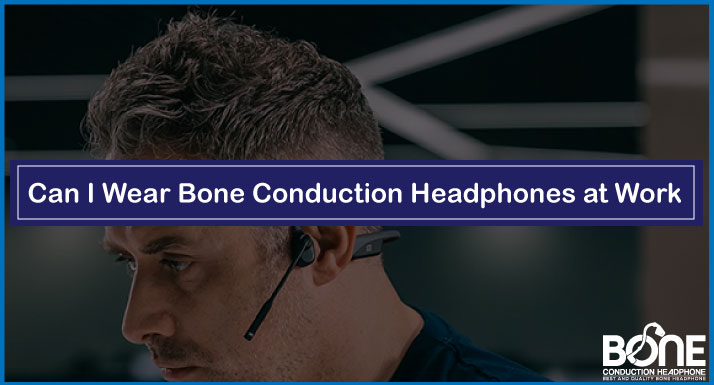As the workplace culture continues to adapt, the question arises, can bone-conduction headphones be worn at work? This article delves into the pros and cons of using bone-conduction headphones in professional settings.
We explore their unique benefits, such as maintaining situational awareness, and analyze their potential drawbacks, such as sound leakage to others.
Additionally, by evaluating the practicality and impact on productivity, we aim to provide insights into whether bone-conduction headphones are suitable for various work environments or not.
Can I Wear Bone Conduction Headphones at Work?
Bone-conduction headphones can be used at work without posing any health hazards. They are considered safe and can be worn comfortably in professional settings.
However, It is crucial to consult your employer or company’s safety personnel to determine if the use of these headphones is permitted in your specific workplace. Remember, having your ears plugged with headphones can hamper your ability to catch crucial warning signals. So, it’s best to steer clear of using them in situations where being alert to such signals is a must for your safety.
Always prioritize the guidelines and regulations set by your employer regarding the use of personal audio devices in the workplace.
Are Bone Conduction Headphones Loud to Others?
While bone conduction technology primarily transmits sound through the bones of the skull, there can be some audio leakage that others may perceive.
However, the extent of sound leakage varies among different models and individual settings. It’s important to note that bone-conduction headphones generally produce lower sound levels compared to traditional headphones.
Nevertheless, in quiet or silent environments, the audio from bone-conduction headphones may be audible to those nearby. To maintain workplace etiquette, it’s advisable to keep the volume at a reasonable level and be mindful of your surroundings to minimize any potential disturbance to others.
Bone Conduction Headphones Pros and Cons
Bone conduction headphones offer several advantages and considerations to keep in mind. The pros include the ability to maintain situational awareness as the ears remain open, making them ideal for outdoor activities or workplaces where alertness is crucial. They can also be a great option for individuals with hearing impairments or conditions affecting the ear canal.
However, there are some cons to consider. Sound leakage may be present, potentially disturbing others nearby, especially in quiet environments. Additionally, the audio quality may not match that of traditional headphones, and some users may find the vibration sensation uncomfortable.
Evaluating these pros and cons will help you make an informed decision when choosing bone-conduction headphones.
Are Bone Conduction Headphones Good
Bone conduction headphones offer unique benefits that make them a good choice for certain individuals. They allow users to listen to the audio while keeping their ears open, maintaining situational awareness in activities like running, cycling, or working in environments that require alertness. They can be particularly helpful for individuals with hearing impairments or those who find traditional headphones uncomfortable.
However, it’s important to note that bone-conduction headphones may have some limitations. The audio quality may not match that of traditional headphones, and sound leakage can be a concern in quiet environments.
Considering personal preferences will help determine if they are a good fit.
Can a normal person use bone-conduction headphones
Bone-conduction headphones are suitable for both individuals with hearing impairments and those with normal hearing. They offer a unique listening experience by transmitting sound through the bones of the skull, bypassing the ear canal. This allows individuals with hearing impairments to enjoy audio without relying solely on their ears.
For individuals with normal hearing, bone-conduction headphones provide an alternative option that keeps the ears open, allowing them to stay aware of their surroundings while still enjoying music or other audio content.
Whether for convenience, comfort, or specific needs, they offer a versatile solution that can be used by a wide range of individuals.
Conclusion
Bone-conduction headphones can be worn at work, offering a safe and practical audio solution for individuals with hearing impairments and those who prioritize situational awareness. However, it is important to adhere to workplace policies to maintain a harmonious work environment.
FAQs
Who can use bone-conduction headphones?
Bone-conduction headphones suit individuals with hearing impairments and those valuing situational awareness. Seek professional advice for specific concerns before using them.

